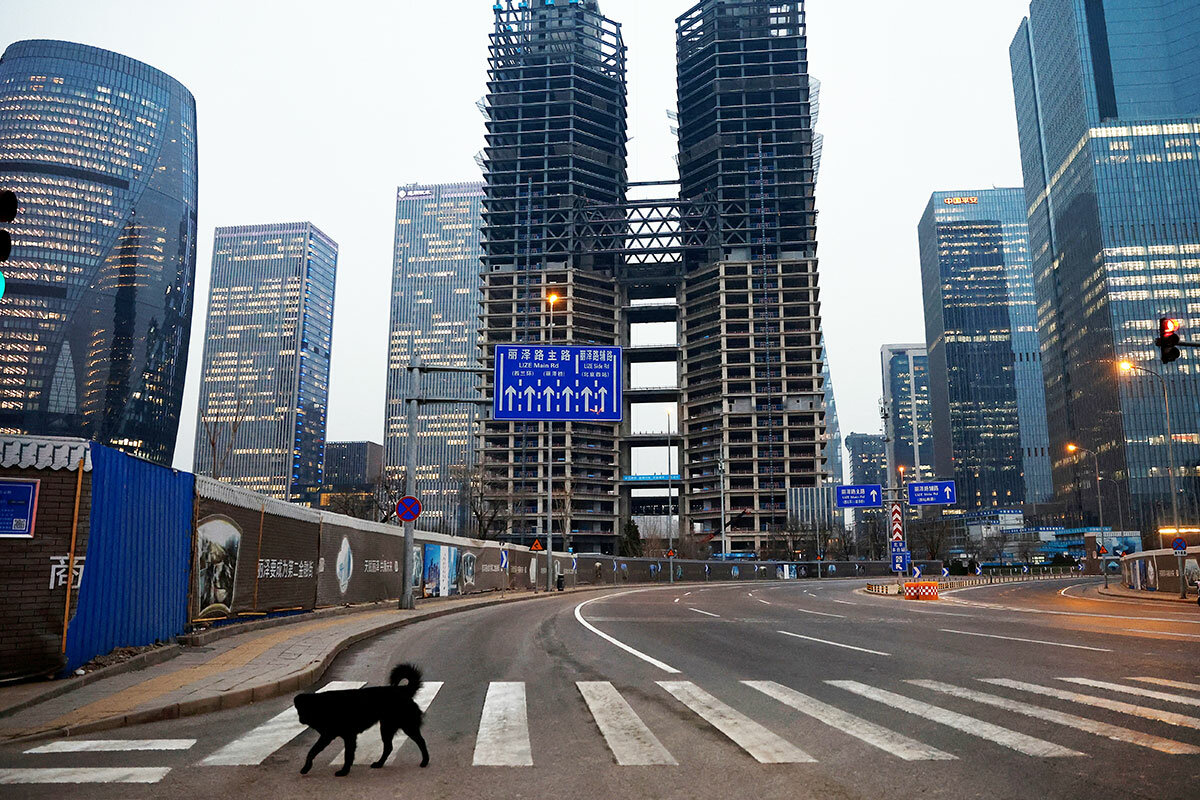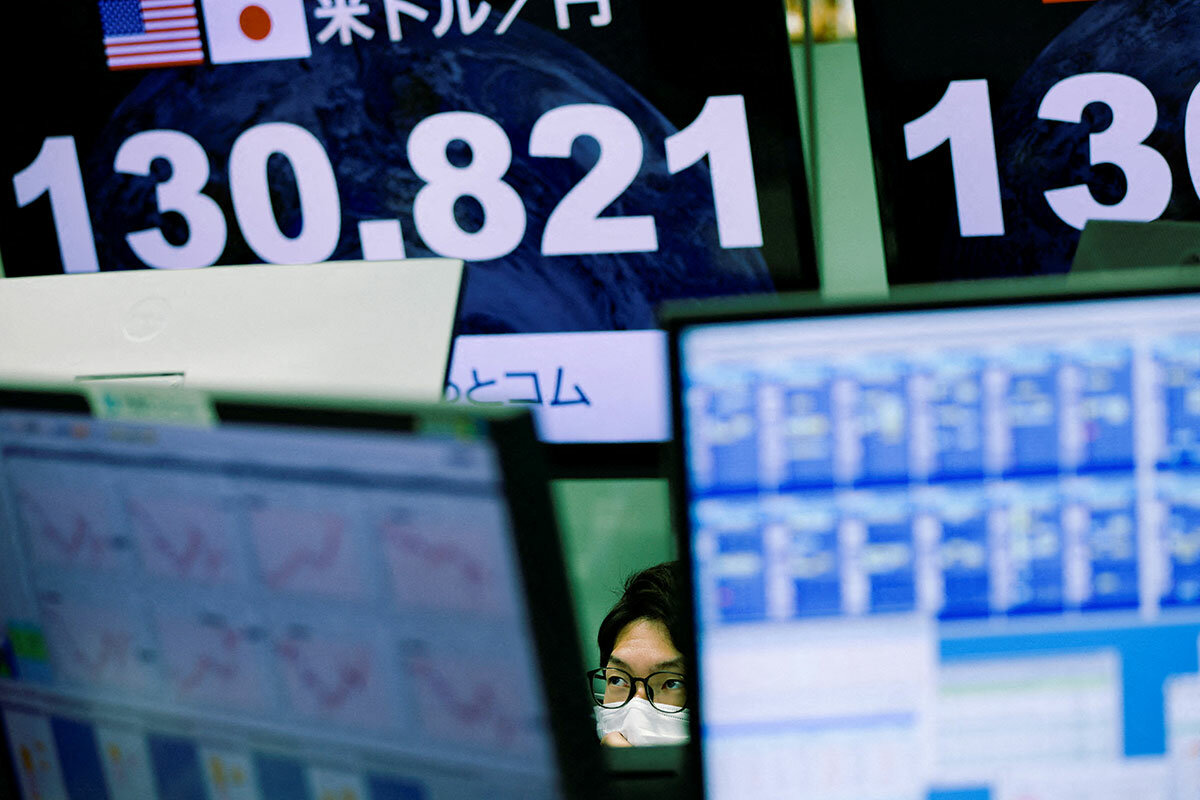After rough 2022, can China still surpass the US?
Loading...
Millions of Chinese are venturing back to their hometowns this week to usher in the Year of the Rabbit and celebrate long-delayed family reunions.
But casting a pall over the festivities are ongoing concerns that gathering will bring a new wave of COVID-19 to rural areas with limited health care, as the epidemic has claimed some 60,000 lives since the country abruptly reopened last month, according to official data. “Tough challenges remain,” Chinese leader Xi Jinping said in a holiday video chat with medical workers Wednesday, “but the light of hope is right in front of us.”
China’s chaotic emergence from its “zero-COVID” regime is one of several measures that made 2022 one of the nation’s most difficult years in decades, experts say.
Why We Wrote This
A story focused onAs new data on China’s slowing economic growth and declining population has cast doubt on the country’s rise, economists are recalculating their forecasts for U.S.-China competition. Many see strengths and weaknesses on both sides.
Beijing released economic data this week showing gross domestic product (GDP) growth declined to 3% in 2022, well below the government target of 5.5% and the second-lowest rate since 1976. It also announced a pivotal demographic shift – the country’s population declined in 2022 for the first time since the early 1960s. India is now expected to surpass China as the world’s most populous country this year.
Although the economy is expected to rebound from the reopening, the long-term trends of slower growth, low productivity, and a graying, shrinking population are prompting a rethink of China’s projected path to become the No. 1 economic superpower – recalculations that have major implications for the world and especially the Indo-Pacific, where China has served for many years as an engine of regional economic integration and growth.
China’s economy will “experience much slower growth going forward,” says Roland Rajah, lead economist at the Lowy Institute, an independent policy think tank in Sydney. “Demographic and external head winds have intensified, while there is still little sign of the kind of major reforms needed in boosting productivity that could provide an offset.”
A Lowy report co-written by Mr. Rajah last year projected that while China would become the world’s biggest economy by 2030, “its size advantage over America would be slim and it would remain far less prosperous and productive per person than the United States and other rich countries, even by mid-century.” The Japan Center for Economic Research, which two years ago predicted China would surpass the U.S. in 2028, said in a forecast last month that “China’s GDP will not surpass that of the United States.”
Indeed, Asian observers are paying keen attention to the relative balance of power between China and the U.S.
“China made mistakes in 2022,” says Kishore Mahbubani, a distinguished fellow at the Asia Research Institute of the National University of Singapore. Still, this was likely an aberration, says the former senior Singapore diplomat and author of the 2020 book “Has China Won?”
“If you judge China’s performance by what it did in 2022, the prospects look bad, but ... the last 30 years of China’s performance still remain the best in China’s history.”
A shaky pivot
China faces major hurdles in attempting to revive faster economic growth, not the least because Beijing’s COVID-19 controls and other policies have hurt confidence among consumers and private businesses.
After years of stimulating growth with investment in infrastructure like roads and high-speed rail and prioritizing less efficient state-owned enterprises, Beijing has signaled it seeks a model driven more by consumption and private companies. But economists say that shift has proved elusive.
“The shift to consumption-led growth” requires many changes “and they are all hard,” says Mary Lovely, senior fellow at the Peterson Institute for International Economics. “It’s also a challenge for the political system,” she says, as consumer choices gain more economic importance. “It’s pretty clear that you are going to change who makes decisions.”
Another challenge is that several of Mr. Xi’s signature policies – from draconian “zero-COVID” lockdowns, to a sweeping regulatory crackdown on technology companies and the reining in of high-profile entrepreneurs in the name of “common prosperity” – have rattled Chinese and foreign private investors.
“Xi Jinping in the last year has really made companies question China’s basic competence,” says Scott Kennedy, trustee chair in Chinese business and economics at the Center for Strategic and International Studies. “China is going to have to do a lot to win back that confidence, first from their domestic population and then from the global business community.”
As Beijing focuses on its domestic recovery, it will likely continue to work to stabilize relations with other countries and reassure investors, he says. At the World Economic Forum annual meeting in Davos, Switzerland, on Tuesday, Chinese Vice Premier Liu He pledged support for the private sector and market economy, adding, “China’s door to the outside will only open wider.”
Asian countries recalibrate
In Asian countries, where the impact of competition between China and the U.S. is felt most acutely, experts closely track the shifting power balance between the superpowers.
Last year, for the first time in three decades, the growth rate of Asian developing countries would surpass that of China, according to a projection in September by the Asian Development Bank.
“The political and policy elites in many Asian countries constantly watch the Chinese economy, and they understand the head winds,” says Li Mingjiang, associate professor in international relations at the Nanyang Technological University in Singapore. “There are doubts now” about how soon – or if – China will surpass the U.S.
“That is one of the reasons they [the elites] want to diversify and they are concerned about overreliance,” Dr. Li says.
China is the biggest trading partner of most Indo-Pacific countries, which see advantages in China’s huge market, infrastructure projects, established supply chains, and ease of negotiating trade agreements, says Dr. Li.
“China has been very active in participating in and pushing for regional free trade agreements,” he says. But he says there are complaints about the quality of Chinese investments and the low wages, environmental damage, and corruption associated with the projects.
Asian countries also actively seek more trade and investment with the U.S., says Miura Hideyuki, associate professor of international relations at Kyorin University in Tokyo. “We are too dependent on China,” he says.
Yet like many observers in Asia, Dr. Miura says Japan and other countries were “shocked” in 2017 when then-President Donald Trump withdrew the U.S. from the Trans-Pacific Partnership trade agreement between 12 Pacific Rim countries negotiated under his predecessor, Barack Obama. Many experts consider the U.S. withdrawal a grave strategic mistake.
Japan helped renegotiate the agreement as the Comprehensive and Progressive Trans-Pacific Partnership and, with other Asia states, has urged the U.S. to join it. China has already applied to join.
“Japan shares a view of most Asian countries, that China is increasing investment and technology and is very intent on increasing its influence in the region,” says Glen Fukushima of the Center for American Progress. “The hope in Japan is that the U.S. will get its act together politically and be able to sustain its role as a leading innovative country” in the region, he says.








